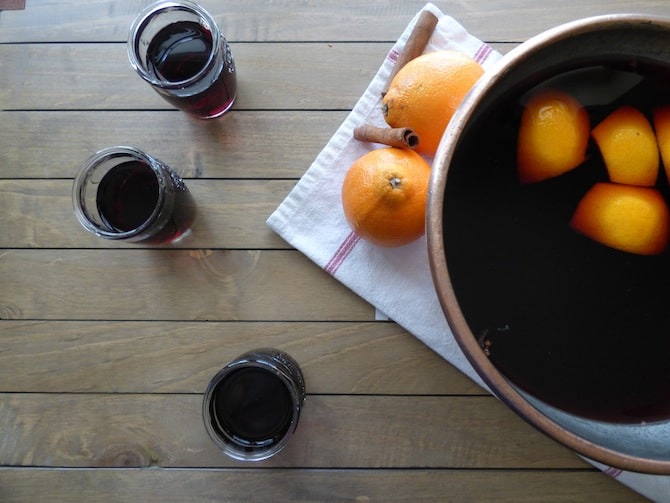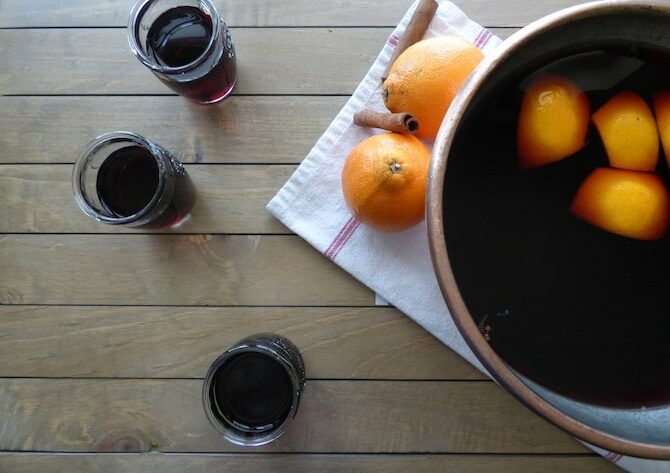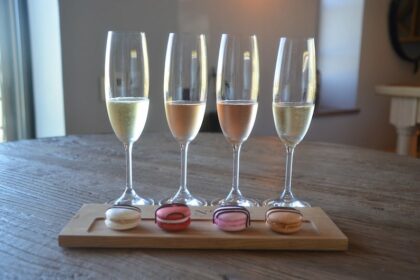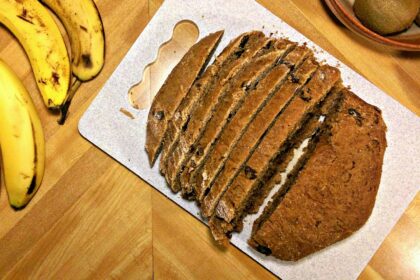
Charles Dickens’ A Christmas Carol is a holiday classic revisited every year, especially by fans of British food. After all, the story is heaped high with all the cozy comestibles of an old-fashioned English yuletide. From plum puddings to mince-pies to wreaths of spiced sausages and roasted chestnuts, it’s enough to get your seasonal taste buds salivating. That is, until we come to the final chapter and find Scrooge bellowing out the book’s first food reference that leaves something to be desired.
“A merry Christmas, Bob!” said Scrooge, with an earnestness that could not be mistaken…we will discuss your affairs this very afternoon, over a Christmas bowl of smoking bishop…”
If the great author will pardon the pun, what-the-Dickens is smoking bishop? While we might be able to reasonably rule out the literal (and very unseasonable) connotations of a conflagrated clergyman, it’s definitely time to get to the bottom of Scrooge’s celebratory bowl.
Starting on the surface, nicknaming drinks after church officials seemed to be a rather irreligious and rampant habit amongst Victorian Brits. “Pope is burgundy, Cardinal is champagne or rye, Archbishop is claret” says Cedric Dickens – great-grandson of Charles – in his book Drinking with Dickens. And especially for our purpose, Dickens’ says, “Bishop is port” – a name most likely derived from the resemblance of a bishop’s purple robe with the deep-purple hue of port wine. Combine this with the equal Victorian zest for mulling wine with fruits and spices and we get a good idea of smoking bishop as a sort of port-based wassail.
But more specifically, Dickens himself tells us in another Christmas tale that the drink is a perfumed “beauty…[with] odours as of ripe vineyards, spice forests, and orange groves.” And while he doesn’t exactly reveal how such spiced orange groves got into his smoking bishop, period recipes tantalizingly describe themes of roasted, clove-infused oranges bobbing in a simmering vessel of sweetened port. It’s a flavor medley most often described by modern merrymakers as resembling a warm sangria. And on a cold December night, a seething bowl of citrus and spice is about as good a way of conjuring up those warm Christmas spirits as it gets. And old Scrooge certainly knew a thing or two (or three) about that.
Recipe: Charles Dickens’ Smoking Bishop*
Serves 8-10
- 5 oranges
- 1 grapefruit
- ½ cup dark brown sugar, packed
- 1 bottle (750 ml) red wine
- 1 bottle (750 ml) ruby port
- 5 whole cloves
- 2 cinnamon sticks
Instructions
1. Slice oranges and grapefruit in half, place them on a baking sheet and roast in a 350° oven for 30 minutes or until the fruit turns pale brown. Let cool.
2. Squeeze the juice of the roasted fruit and put both juice and fruit into a large saucepan along with the remaining ingredients.
3. Simmer mixture for one hour, carefully stirring to dissolve sugar.
4. Serve in warm glasses and sip like a newly-reformed Scrooge.
*Recipe adapted from Drinking With Dickens (New Amsterdam Books; 1998), by Cedric Dickens.
Documentation
Dickens, Charles. A Christmas Carol. New York: HarperCollins, 2009.
Dickens, Cedric. Drinking With Dickens. New York: New Amsterdam Books, 1998.
Hewett, Edward and William F. Axton. Convivial Dickens: the Drinks of Dickens and His Times: Athens, OH: Ohio University Press, 1983.
About The Author
Bryan Koz is a graduate of The Culinary Institute of America with an insatiable appetite for British food history and literature. Though his old soul has never quite gotten over the disappointment of not being born into 19th-century England, he’s consoled himself with researching Victorian eating habits and cooking up the foods Charles Dickens would have once enjoyed. Professionally, he’s worked at Saveur magazine’s test kitchen and is currently writing full time.
Guest Author
Latest posts by Guest Author (see all)
- Central Restaurante: An Innovative Terroir Tasting Experience In Lima - Jun 26, 2018
- How To Make Youtiao Like You’re From China - Feb 22, 2018
- How To Eat Your Way Around Georgia (The Country) - Sep 25, 2017
- How To Make Apfelstrudel Like You’re From Austria - Mar 6, 2017
- Top 10 Fried Snacks To Savor On An Indonesian Adventure - Jun 23, 2016







Thank-you Brian, very interesting post. 19-th century England? I love the idea!